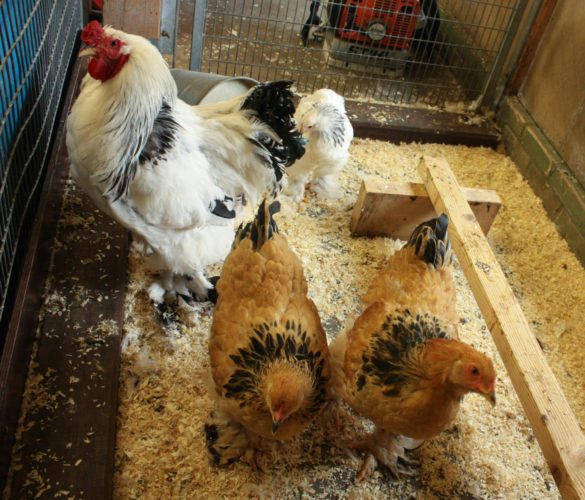Buying meat at the grocery store can be a tricky business. Customers are becoming more aware of the sometimes deplorable conditions for both the animals and the factory workers that result in dirt-cheap drumsticks, and the industry is fighting hard to catch up.
But as a result, some manufacturers are simply slapping meaningless labels on the same old product and charging you more. One you see more and more these days is “no antibiotics.” But what does this label even mean, and why should you care?
Well, first things first. You should care because an overabundance of antibiotics in your body can lead to antibiotic-resistant bacteria. And if that makes you worried, it should. Nearly two-thirds of all antibiotics produced in America go to livestock. The use of antibiotics in agriculture has skyrocketed—there was a 22 percent increase in just the five-year period from 2009 to 2014.

That means if you get an infection that might normally be treated with a 10-day course of antibiotics, it could take much more medicine and much longer to totally eradicate the infection. It could even create a superbug that antibiotics can’t beat at all. The Centers for Disease Control and Prevention has identified antibiotic resistance as “one of the world’s most pressing health concerns.” In the fall of 2016, an elderly woman in Nevada was the first person to die of a strain of Klebsiella pneumoniae that was resistant to “all available antimicrobial drugs.” Doctors tried no fewer than 26 antibiotics.
So now back to your food. If we know that the overuse of antibiotics in meat is a serious issue that could give rise to a super-flu, then why are we still using them? Well, some producers use them to make animals grow faster or survive conditions like overcrowding that can lead to infections.
But in recent years, the meat industry has been scaling back, largely due to massive advocacy campaigns and the rising rates of informed consumers. The poultry industry has led the charge, with many major sellers promising to halt antibiotic use in chickens. Everyone from fast food giants like KFC and McDonalds to poultry producer Purdue have jumped on the no-antibiotics bandwagon.
But what about those stickers that promise “no antibiotics”? What do they really mean? Well, that’s where things get tricky—because it’s not a blanket statement. Some packages might read “no antibiotics ever” while others tout “no medically important antibiotics” and still others “raised without growth-promoting antibiotics.” And organic meats are in a class of their own.

Here are explanations of three common labels you’ll see on packaged meat:
1. No Antibiotics Ever
This actually means exactly what it says. If an animal is sick enough that antibiotics are the only option to keep it alive, it will be removed from the “no antibiotics” processing line and sent to one that packages conventionally raised meats. This is a verified claim, and if the label also has a USDA Process Verified stamp, even better. This means that USDA inspectors have confirmed, in person, that no antibiotics were used. Organic meats fall under this label, and if antibiotics have to be used, the animal can no longer be processed and sold as organic.
2. No Medically Important Antibiotics
This is a trickier label. It means that the animals weren’t given any antibiotics that you would also give a human, like amoxicillin. But this still means they’re using other antibiotics, which can still lead to overuse and those aforementioned superbugs.
3. No Growth-Promoting Antibiotics
This also means what it says: No antibiotics were fed to the animal to make it grow faster. But this still means that medically important antibiotics may have been used to keep the animal healthy. Also, according to the FDA, meat producers can’t use those medically important antibiotics to make animals grow faster, so this is really only marginally better than standard meat industry practices.
Next time you’re at the meat counter, take a second look at those labels so you can select a product you feel good about serving your family, and make sure you’re getting your money’s worth.
This story originally appeared on Simplemost. Checkout Simplemost for other great tips and ideas to make the most out of life.

